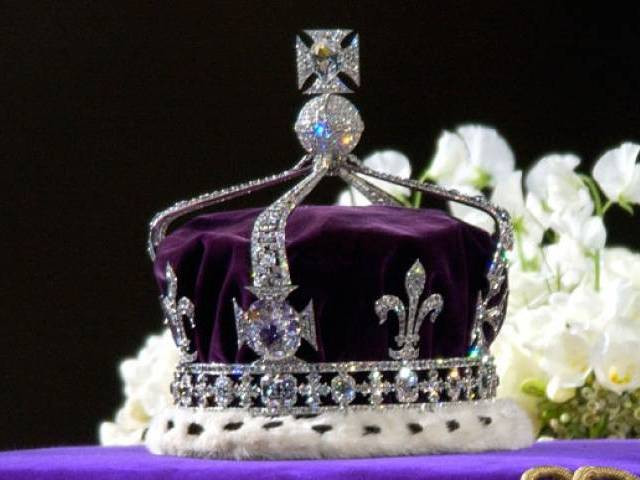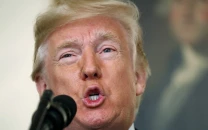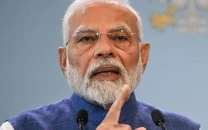Six myths about 'the world's most infamous diamond'
Myth: The Koh-i-Noor is a flawless diamond

The Crown of Queen Elizabeth the Queen Mother, with the Kohinoor diamond, sits in the Tower of London with the Crown Jewels. PHOTO: REUTERS
The 105-carat gemstone came into possession of the British in the 19th Century.
Understandably, ownership of the gem is a sensitive issue for many Indian who believe the diamond was stolen by the British.
There are a myriad of myths associated with the diamond. In Kohinoor: The Story of the World's Most Infamous Diamond, William Dalrymple and Anita Anand dwell on the chief ones.
Myth 1: The Koh-i-Noor is the foremost of all Indian diamonds
Noor Mahal: the hidden gem of Bahawalpur
Reality: The gem as well as two more diamonds, namely the Darya-i-Noor and the great Mughal Diamond, departed India with Iranian monarch Nader Shah who invaded the Mughal Empire in 1739. In the 19th Century, the Koh-i-Noor arrived in Punjab and achieved fame.
Myth 2: The Koh-i-Noor is a flawless diamond
Reality: The original gem was actually flawed as yellow flecks could be seen running through its plane at the centre. One of the flecks was large and affected the gem’s ability to refract light. This was the reason Queen Victoria’s husband Prince Albert was keen to have it re-cut.
Myth 3: The Koh-i-Noor was extracted from India’s Kollur mine in the 13th Century
Reality: It does not seem possible to tell about the whereabouts of the gem and that’s the reason it is so mysterious. However, it can be said that the diamond wasn’t mined at all and was found from a dry river bed somewhere in south India.
Myth 4: The Koh-i-Noor was treasured by the Mughals as most precious
Reality: Hindus and Sikhs preferred diamonds over other gems while Mughals and Persians opted for uncut, large and brightly-coloured gems.
Myth 5: The Koh-i-Noor was taken away from Mughal Emperor Muhammad Shah Rangila in the context of a ceremonial turban exchange
Koh-e-Noor belongs to Pakistan, says Indian-born British politician
Reality: As the Persian historian Marvi suggests, it could not have been possible for the emperor to hide the gem in his turban, as it was the most striking feature of the fabled Peacock Throne at that time . The diamond was placed on the roof of the throne in the head of a peacock.
Myth 6: The Koh-i-Noor was crudely cut by a Venetian cutter and stone polisher.
Reality: As the French gem merchant Jean-Baptiste Tavernier states, stone cutter Hortensio Borgio had clumsily cut a large diamond, however, it wasn’t the Koh-i-Noor.
Tavernier identified the gem as the Great Mughal Diamond presented to Mughal Emperor Shah Jehan by a diamond merchant.
This article originally appeared on the BBC.



















COMMENTS
Comments are moderated and generally will be posted if they are on-topic and not abusive.
For more information, please see our Comments FAQ